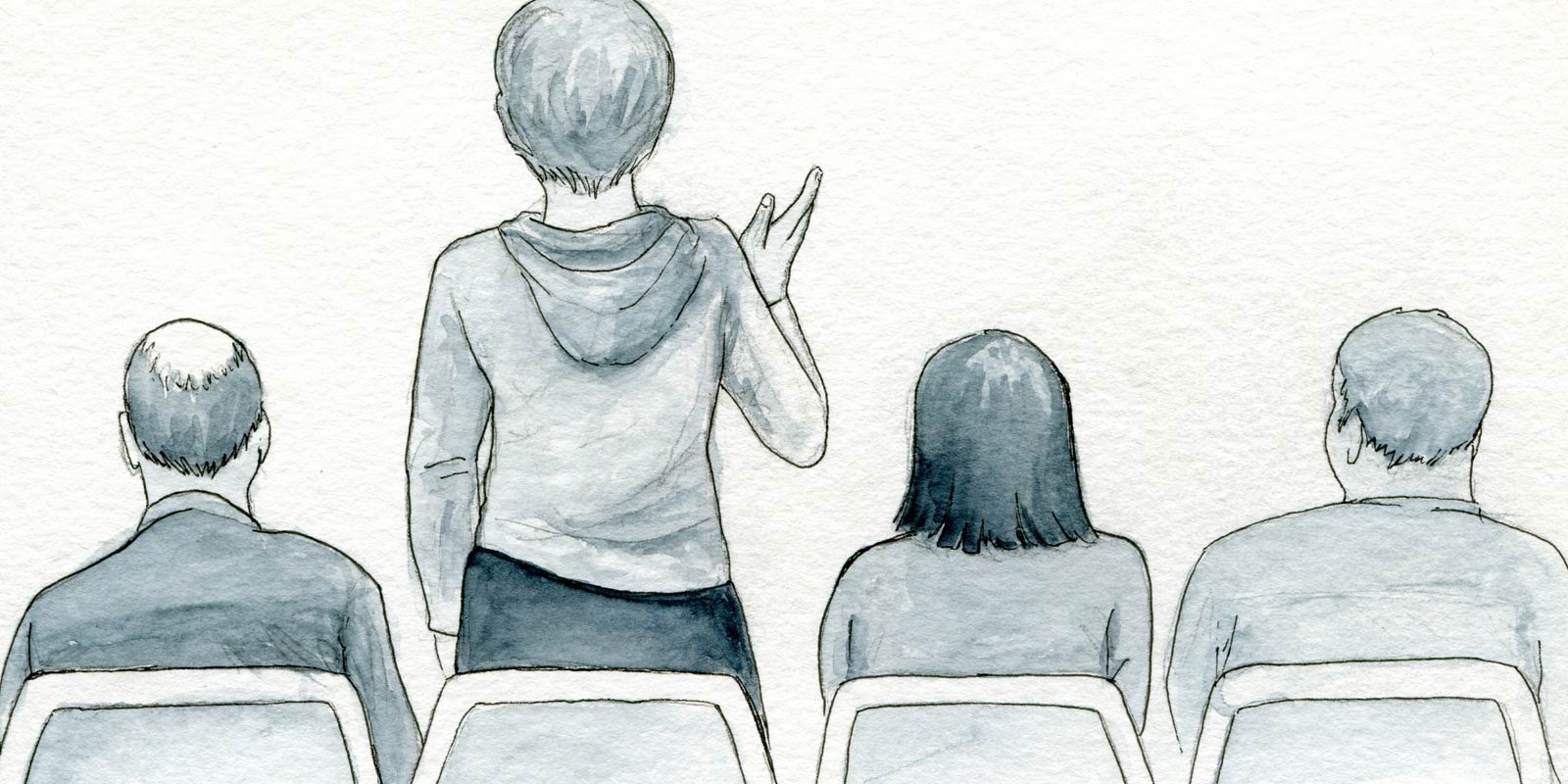While working at LinkedIn I’ve discovered a few truths about professional identity. Within even the most active groups and networks there is a silent majority. Within even the most simple profile what you choose to say can elevate you. And by posting even the smallest updates you can be found. Quite simply: those who participate are noticed.
One of the misconceptions I see frequently is the idea that you must have a complete sense of who you are and what you do before you “present” yourself by participating. In fact, exercising your voice is one of the best ways to discover how you want to represent yourself.
Discover along the way
I’ve drawn as long as I can remember, and from early on I remember being concerned about coming up with a style that was uniquely mine. I would study the styles of others, and I would copy them to try to understand them, but that didn’t seem to help me find my own. I imagined finding my style would simply happen one day. It seemed it would be as abrupt as a particularly indelible image from Greek mythology: the birth of Athena. Athena, the goddess of wisdom and inspiration, is described as springing forth fully formed from the head of Zeus. I hoped I would find my inspiration too (though perhaps not quite that way).
What I found is that I already had a style that simply revealed itself over time. It took some time to cultivate the eye to see it when looking at my own work. After I created something, I’d pause to see what I’d made. I’d take a good hard look to see what stood out to me. The evaluation gave me ideas about how to go deeper with certain techniques and strengthen the aspects that best represented what I wanted to communicate. It was equally important to identify the parts that were weak so I could either cull them or to find a way to make them work. Though each project felt unique to me, I started to see patterns across them that I had not been conscious of along the way. From that I found the elements I can identify as my particular style.
Being more participatory within the design industry felt just as elusive. Though I’d felt the need to speak up in some way, I kept envisioning some fully-formed blog or presentation simply…happening. With art, at least, I was able to make progress while I didn’t know what I was doing simply because I enjoyed the sheer act of drawing, painting, or sculpting. I may not have known where it was going, but I liked it enough to keep making art until I did. Writing, on the other hand, was purely a functional task. It was (and still is) a skill I appreciate to help me accomplish something bigger, but I find no joy in the act of writing. And yet I felt compelled to say something.
Natural next steps
I felt hesitant to speak up online, but occurred to me that I enjoyed talking with people in person. My work days are filled with conversations: asking questions, sharing what I’ve learned, puzzling through a problem together. Perhaps I didn’t need to make some large project to reach out to others. I just needed a way to do it that felt like a natural extension of what I was already doing.
I was already an active consumer of other people’s content and until then it simply never occurred to me to respond to them. Now when I read articles I began to think about the author behind the content, and that motivated me to give feedback. To get over the simple fear of speaking up, I gave myself a goal of commenting on one (professional) article every day. I could always find something to say about at least one thing I’d read that day. One perk of this goal is that I’ll get to hear back from the author on occasion.
Another easy source for providing more thoughtful opinion were the articles I was motivated to share. I resolved to always provide context when I shared an article. My colleagues were busy, so why not take a moment to tell them why it matters? If it was good enough to share, I could describe why with a brief sentence or a particularly insightful quote.
It may not seem like much, but these small steps revealed patterns to me about what I cared about and what insights I could provide. That helped me understand what was unique about them, and in turn has led me to build upon those and tackle bigger personal projects for both art and design.
There’s a virtuous cycle to participation that will make your thinking and your contributions better over time. Use the quick flashes of inspiration you get when you read other people’s work as a cue to talk about it. Over time, those can show you more about yourself than any amount of planning would. Take the next step and start talking so you can discover your distinct voice.


Leave a Reply